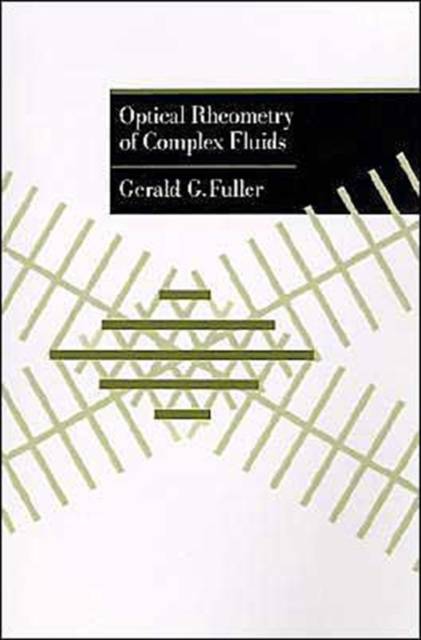
- Afhalen na 1 uur in een winkel met voorraad
- Gratis thuislevering in België vanaf € 30
- Ruim aanbod met 7 miljoen producten
- Afhalen na 1 uur in een winkel met voorraad
- Gratis thuislevering in België vanaf € 30
- Ruim aanbod met 7 miljoen producten
Zoeken
Omschrijving
This book provides a self-contained presentation of optical methods used to measure the structure and dynamics of complex fluids subject to the influence of external fields. Such fields--hydrodynamic, electric, and magnetic--are commonly encountered in both academic and industrial research, and can produce profound changes in the microscale properties of liquids comprised of polymers, colloids, liquid crystals, or surfactants. Starting with the basic Maxwell field equations, this book discusses the polarization properties of light, including Jones and Mueller calculus, and then covers the transmission, reflection, and scattering of light in anisotropic materials. Spectroscopic interactions with oriented systems such as absorptive dichroism, small wide angle light scattering, and Raman scattering are discussed. Applications of these methods to a wide range of problems in complex fluid dynamics and structure are presented, along with selected case studies chosen to elucidate the range of techniques and materials that can be studied. As the only book of its kind to present a self-contained description of optical methods used for the full range of complex fluids, this work will be special interest to a wide range of readers, including chemical engineers, physical chemists, physicists, polymer and colloid scientists, along with graduate and post-graduate researchers.
Specificaties
Betrokkenen
- Auteur(s):
- Uitgeverij:
Inhoud
- Aantal bladzijden:
- 288
- Taal:
- Engels
- Reeks:
Eigenschappen
- Productcode (EAN):
- 9780195097184
- Verschijningsdatum:
- 29/06/1995
- Uitvoering:
- Hardcover
- Formaat:
- Genaaid
- Afmetingen:
- 165 mm x 235 mm
- Gewicht:
- 557 g

Alleen bij Standaard Boekhandel
+ 547 punten op je klantenkaart van Standaard Boekhandel
Beoordelingen
We publiceren alleen reviews die voldoen aan de voorwaarden voor reviews. Bekijk onze voorwaarden voor reviews.











